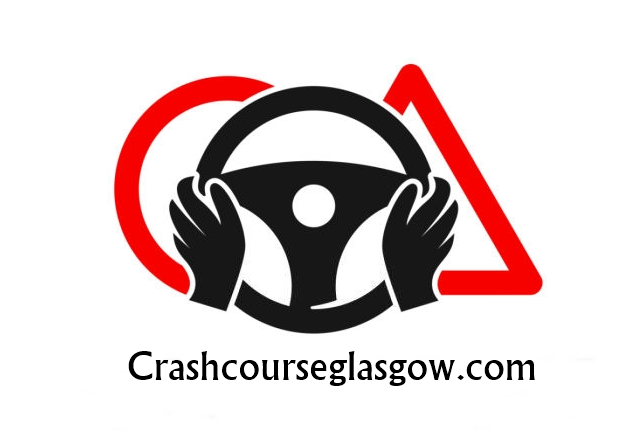I. Introduction
A. Why These Questions Matter
Getting ready for your UK driving test involves more than just driving around. The “show me, tell me” questions are a bit like a secret weapon—they’re not the main event, but they’re super important.
In this guide, we’ll talk about why these questions matter and how understanding them can help you pass your driving test.
B. Knowing = Confidence
You know how it feels when you’re prepared for something, right? Well, these questions are a bit like that.
Even though you won’t fail your driving test just because of them, knowing the answers really well makes you feel super confident.
Your instructor will cover these questions, but if you’re already familiar with them, it’s like having a superpower!
C. Let’s Dive In
Join us as we go through the “show me, tell me” questions step by step. We’re here to make it simple and help you feel more sure about facing this part of your UK driving test. Let’s get started!

II. Understanding “Show Me, Tell Me” Questions
A. Why These Questions Matter
The questions about showing and telling might seem small, but they’re like a sneak peek into your car knowledge. We’ll chat about why they’re important, how they relate to what you’ll do in the driving test, and why knowing them well can make your test day smoother.
B. Show vs. Tell: Decoding the Difference
Let’s keep it simple: there are ‘show me’ questions and ‘tell me’ questions. We’ll figure out when you’ll face each type during your test and how they fit into the whole picture.
Understanding this relationship helps you know what to expect on your big day.
C. Boosting Your Test Experience
Imagine your driving test like a puzzle, and these questions are essential pieces.
When you grasp them well, the whole puzzle comes together smoothly.
We’ll talk about how having a good handle on these questions impacts your entire test-taking experience, making it less stressful and more successful.

III. Exploring “Show Me” Questions
Ready to dive into the ‘show me’ questions?
These are the ones where you actually demonstrate something while driving.
We’ll go through specific examples, break them down step by step, and make sure you’re all set to handle any ‘show me’ challenge on your driving test.
A. Real-World Connection: Practical Insights
Introduction to Practical Insights:
Navigating the intricacies of a driving test involves more than just mastering the mechanics of the vehicle; it’s about translating that knowledge into real-world skills.
In this segment, you will discover practical insights surrounding ‘show me’ questions, aiming to bridge the gap between test scenarios and everyday driving.
From envisioning rainy-day scenarios to mastering the nuances of your car’s controls, these insights provide a roadmap for not just passing a test but becoming a confident and adept driver on the roads.
- Rear Windscreen Wash:Instructor’s Possible Question:
- “Could you show me how you would wash and clean the rear windscreen?”
- When asked to demonstrate washing the rear windscreen in your driving test, envision it as a typical scenario on a rainy day.
Knowing how to clear the rear window isn’t just about passing the test; it’s a practical skill for maintaining visibility during downpours.
- Washing the Windscreen:Instructor’s Possible Question:
- “When it’s safe to do so, can you show me how you would wash and clean the front windscreen?”
- Let’s break it down with these steps:
- Identify the lever on the right side of the steering column.
- Activate the windscreen washers.
- Observe as the wipers automatically clear the windscreen.
B. Step-by-Step Showtime: Your Action Plan
- Engaging the Rear Demister:Instructor’s Possible Question:
- “Could you show me how you would set the rear demister?”
- When demonstrating the rear demister, follow these steps:
- Locate the controls on the centre console to your left.
- Adjust the fan temperature.
- Ensure the correct button for the rear demister is activated.
- Using the Horn:Instructor’s Possible Question:
- “When it’s safe to do so, can you show me how you would operate the horn?”
- Give a confident honk when it’s safe to do so. The horn is your audible signal, so embrace it with a clear beep, adhering to road manners.
- Demisting the Front Windscreen:Instructor’s Possible Question:
- “When it’s safe to do so, can you show me how you would demist the front windscreen?”
- Similar to the rear demister, find controls on the central console. Different function, same principle—know your car’s setup for efficient demisting.
- Opening and Closing the Side Window:Instructor’s Possible Question:
- “When it’s safe to do so, can you show me how you would open and close the side window?”
- Need fresh air during a drive? Before any action, confirm it’s safe. Then, demonstrate opening and closing the side window with confidence.
These steps aren’t just for the test; they’re essential skills for everyday driving. Master them, and you’re not just passing a test—you’re becoming a more capable and confident driver.

IV. Tackling “Tell Me” Questions
A. Theoretical Insight: “Tell Me” Questions
Unveiling the Theoretical Aspect:
Before you hit the road, you must navigate the theoretical side of “tell me” questions. In this section, we dissect inquiries related to vehicle safety and maintenance, understanding not just what’s asked but why it’s crucial for your driving knowledge.
- Checking Brakes:Instructor’s Possible Question:
- “Tell me how you would check that the brakes are working before starting a journey?”
- When asked how you’d check that the brakes are working before starting a journey, remember to lightly test them as you set off. They should feel firm, not spongy or slack, and the vehicle shouldn’t pull to either side.
- Tyre Pressures:Instructor’s Possible Question:
- “Where would you find the information for the recommended tyre pressures for this car and how should tyre pressures be checked?”
- Where do you find recommended tyre pressures and how should you check them? Simple:
- Check your car’s manual for recommended pressures.
- Use a reliable pressure gauge when the tyres are cold.
- Don’t forget to refit valve caps after checking or adjusting.
B. Correct Responses: Mastering the Details
- Adjusting Head Restraints:Instructor’s Possible Question:
- “Tell me how you make sure your head restraint is correctly adjusted so it provides the best protection in the event of a crash?”
- Ensure your head restraint is correctly adjusted for maximum protection. It should be at least as high as the eyes or top of the ears and as close to the back of the head as is comfortable.
- Inspecting Tyres:Instructor’s Possible Question:
- “Tell me how you’d check the tyres to ensure that they have sufficient tread depth and that their general condition is safe to use on the road.”
- When asked how you’d check the tyres for sufficient tread depth and general condition, remember:
- No cuts or bulges in the tyre.
- Tread depth should be 1.6mm across the central three-quarters.
- Lights Check:Instructor’s Possible Question:
- “Tell me how you’d check that the headlights and tail lights are working. You don’t need to exit the vehicle.”
- Confirming that headlights and tail lights are working involves a simple switch-on and walk-around. No need to exit the vehicle—it’s a “tell me” question.
- Anti-lock Braking System (ABS):Instructor’s Possible Question:
- “Tell me how you’d know if there was a problem with your anti-lock braking system.”
- If there’s a problem with your ABS, a warning light will appear on the dashboard. Explain this clearly when responding to the question.
- Direction Indicators:Instructor’s Possible Question:
- “Tell me how you’d check the direction indicators are working.”
- Like lights, checking indicators involves operating the switch and doing a quick walk-around. Again, no need to step out.
- Brake Lights:Instructor’s Possible Question:
- “Tell me how you’d check the brake lights are working on this car.”
- Operate the brake pedal and utilise reflections to confirm brake lights are working. Simple, effective, and done without leaving the car.
- Power-Assisted Steering:Instructor’s Possible Question:
- “Tell me how you’d check the power-assisted steering is working before starting a journey.”
- Check the power-assisted steering by applying gentle pressure on the steering wheel before starting. You should feel a slight but noticeable movement.
- Rear Fog Lights:Instructor’s Possible Question:
- “Tell me how you’d switch on the rear fog lights and explain when you’d use them. You don’t need to exit the vehicle.”
- To demonstrate switching on rear fog lights, turn the switch on, ensuring your dipped headlights are already on. Explain when you’d use them.
- Main Beam Headlights:Instructor’s Possible Question:
- “Tell me how you switch your headlight from dipped to main beam and explain how you’d know the main beam is on.”
- Switch from dipped to main beam, ensuring the main beam warning light on the dashboard is active.
- Engine Oil Check:Instructor’s Possible Question:
- “Open the bonnet and tell me how you’d check that the engine has sufficient oil.”
- Open the bonnet, locate the dipstick, and check the engine oil level against the minimum and maximum markers.
- Engine Coolant Level:Instructor’s Possible Question:
- “Open the bonnet and tell me how you’d check that the engine has sufficient engine coolant.”
- You would need to identify the high and low level markings on either the header tank or the radiator filler cap. Then you would top it up to the correct level.
- Hydraulic Brake Fluid:Instructor’s Possible Question:
- “Open the bonnet and tell me how you’d check that you have a safe level of hydraulic brake fluid.”
- Explain that you’d point out where the reservoir is and check the level of the brake fluid against the high and low markers.

V. Practical Demonstration: More ‘Show Me, Tell Me’ Question Examples
A. Walking through the Process: Responding to Specific “Show Me” Questions
- Operating the Horn:Instructor’s Possible Question:
- “When it’s safe to do so, can you show me how you would operate the horn?”
- To demonstrate, confidently press the horn button, producing a clear and audible sound. Ensure it’s done at an appropriate moment, considering road etiquette.
- Demisting Windows:Instructor’s Possible Question:
- “When it’s safe to do so, can you show me how you would demist the front windscreen?”
- Similar to the rear demister, locate the controls on the central console. Clearly articulate the steps for effective demisting.
B. Discussing Potential Scenarios and Variations
- Adapting to Changing Conditions:
- Explore hypothetical situations with the instructor, such as responding to these questions in adverse weather or unexpected circumstances. Discuss how your actions might differ based on the conditions.
- Instructor’s Guidance:
- “In challenging weather conditions, demonstrate how you would adapt to operating the horn or demisting windows effectively.”
C. Visualising and Practising Real-time Responses
- Role-Play Exercise:
- Engage in a role-play scenario where the instructor acts as the examiner posing ‘show me, tell me’ questions. Practice your responses in real-time, simulating the test environment.
- Instructor’s Coaching:
- “Let’s simulate the test conditions. I’ll pose a few ‘show me, tell me’ questions, and you respond as you would during the actual test.”
- Visual Aids and Checklists:
- Provide learners with visual aids or checklists summarising the key points for each ‘show me, tell me’ question. Encourage them to review and visualise the steps regularly.
- Instructor’s Recommendation:
- “Take a look at these visual aids. Use them as a quick reference to reinforce your memory. Visualisation is key to confidence during the test.”
By breaking down specific ‘show me’ questions, addressing potential variations, and incorporating real-time practice, learners can enhance their readiness for the practical driving test.
This section aims to empower individuals to not only know the answers but to demonstrate them effectively in diverse scenarios they might encounter on the road.

VI. Common Pitfalls and How to Avoid Them
A. Identifying Typical Challenges Faced by Learners in Answering “Show Me, Tell Me” Questions
- Overthinking the Questions:
- Common Challenge: Some learners may overthink the ‘show me, tell me’ questions, leading to confusion and anxiety.
- Avoidance Strategy: Focus on the simplicity of the questions. They are designed to assess basic vehicle knowledge, not advanced mechanics.
- Nervousness and Forgetfulness:
- Common Challenge: Nervousness can cause forgetfulness, making it challenging to recall answers even if you know them.
- Avoidance Strategy: Practice deep-breathing techniques to stay calm. Regular revision and mock tests can enhance memory recall under pressure.
B. Strategies for Remaining Calm and Composed During the Test, Even When Faced with Unexpected Questions
- Stay Calm Under Pressure:
- Test Scenario: The examiner might ask an unexpected or less familiar question.
- Calm Strategy: Take a moment to compose yourself. If unsure, provide a reasoned response based on general knowledge.
- Positive Visualisation:
- Test Scenario: Feeling overwhelmed by the pressure of the practical test.
- Calm Strategy: Visualise a positive outcome. Envision confidently answering ‘show me, tell me’ questions during the test.
C. Learning from Common Mistakes to Enhance Overall Test Performance
- Post-Test Reflection:
- After the Test: Reflect on any questions where you felt unsure or made mistakes.
- Learning Strategy: Understand the correct answers and the reasons behind them. Use this knowledge to enhance your overall understanding.
- Mock Test Analysis:
- During Practice: Analyse your performance in mock tests.
- Learning Strategy: Identify recurring mistakes and work on strengthening your knowledge in those specific areas.
By recognising common pitfalls, employing effective strategies for remaining composed, and learning from mistakes, you can significantly improve their performance on the ‘show me, tell me’ questions.
This section aims to equip you with practical approaches to navigate challenges and enhance your overall readiness for the driving test.

VII. Preparing for the Unexpected: Adapting to Changes
A. Staying Informed about Any Updates or Changes to “Show Me, Tell Me” Questions
- Regular DVSA Updates:
- Stay Informed: Keep an eye on updates from the Driver and Vehicle Standards Agency (DVSA) for any modifications to ‘show me, tell me’ questions.
- Stay Proactive: Actively seek information through official channels to ensure you’re aware of the latest question formats.
B. Strategies for Adapting to New Questions and Ensuring Preparedness for Evolving Test Requirements
- Continuous Practice:
- Adaptation Strategy: Integrate new questions into your practice routine regularly.
- Stay Prepared: Embrace a mindset of continuous learning and practice to confidently adapt to any changes in the questions.
- Mock Tests with Variety:
- Practice Scenario: Include a variety of ‘show me, tell me’ questions in your mock tests.
- Adaptation Strategy: Exposure to diverse questions during practice enhances your ability to adapt to unexpected queries during the actual test.
C. Utilising Online Resources and Tools to Stay Updated on Potential Modifications
- Official DVSA Website:
- Resource Access: Visit the DVSA website for official resources.
- Stay Updated: Regularly check for updates, additional guidance, or new question formats released by the DVSA.
- Online Forums and Communities:
- Community Interaction: Engage in online forums or communities related to driving tests.
- Shared Insights: Exchange information with fellow learners to stay abreast of any changes or insights into ‘show me, tell me’ questions.
- Educational Apps and Platforms:
- App Integration: Explore online apps that focus on practical driving knowledge.
- Interactive Learning: Use interactive platforms that might simulate potential changes in the questions, ensuring you’re well-prepared for any modifications.
By staying informed through official channels, adapting your practice to new questions, and utilising online resources, you can enhance your readiness for unexpected changes in ‘show me, tell me’ questions.
This section aims to provide practical guidance on staying proactive and well-prepared in a dynamic testing environment.

VIII. Interactive Learning: Tips for Memorisation
A. Create a Focused Study Plan to Memorise Key Details and Responses
- Question Breakdown:
- Systematic Approach: Break down each ‘show me, tell me’ question into manageable components.
- Step-by-Step Learning: Focus on understanding and memorising individual elements before addressing the question as a whole.
- Flashcards and Summaries:
- Visual Aids: Create flashcards summarising key details for each question.
- Quick Revision: Regularly review flashcards to reinforce your memory and ensure a quick recall during the test.
B. Build Confidence Through Repeated Practice and Mock Test Scenarios
- Consistent Practice:
- Routine Practice: Regularly dedicate time to practising ‘show me, tell me’ questions.
- Confidence Builder: The more you practice, the more confident and familiar you become with the questions.
- Mock Test Simulations:
- Realistic Environment: Simulate test conditions with mock tests, including time constraints.
- Test Preparedness: Practising in a test-like environment helps alleviate anxiety and prepares you for the actual examination.
- Feedback Incorporation:
- Learn from Mistakes: Analyse feedback from practice sessions and mock tests.
- Continuous Improvement: Use feedback to identify areas for improvement and refine your memorisation strategies.
Interactive learning, practical exercises, and focused study plans, significantly aids in memorising ‘show me, tell me’ questions.
Building confidence through repeated practice and mock test scenarios ensures you’re well-prepared for the actual driving test.
This section provides actionable tips to enhance your memorisation skills and increase confidence in handling the questions effectively.

IX. Beyond “Show Me, Tell Me”: Official DVSA Resources
A. Explore Supplementary Materials for a Well-Rounded Learning Experience
- Official DVSA YouTube Channel
- Visual Learning: Access educational videos illustrating ‘show me, tell me’ questions and practical driving tasks.
- DVSA Learning Zone
- Comprehensive Guides: Utilise the official DVSA Learning Zone for in-depth resources covering various aspects of practical driving knowledge.
B. Enhance Understanding with Additional DVSA Resources
- Official DVSA Publications
- Authoritative Information: Explore a collection of official DVSA publications for accurate and relevant content.
- DVSA Official Apps
- Interactive Learning: Download official DVSA apps designed to complement traditional study materials, offering varied learning formats.
C. Emphasise the Broader Context with Driving Theory Integration
- DVSA Driving Test Theory
- Holistic Approach: Integrate ‘show me, tell me’ knowledge with broader driving theory using official DVSA resources.
- DVSA Official Theory Test Kit
- Contextual Understanding: Enhance comprehension by connecting practical tasks with theoretical knowledge through the DVSA Official Theory Test Kit.
By exclusively focusing on official DVSA resources, this section guides learners to trusted materials for a comprehensive and reliable preparation for the practical driving test.

X. Conclusion
A. Summarising Key Takeaways for Effective Preparation and Success in “Show Me, Tell Me” Questions
In conclusion, mastering the “Show Me, Tell Me” questions is a crucial aspect of your practical driving test.
Ensure you understand the significance of both ‘show me’ and ‘tell me’ questions, as they demonstrate your fundamental knowledge of the vehicle and commitment to safety.
B. Instilling Confidence in Learners to Face These Questions with Competence and Composure
Confidence is key when facing the examiner’s queries. By familiarising yourself with the specific tasks and explanations outlined in this guide, you’re better equipped to handle ‘show me, tell me’ questions with competence and composure.
C. Reiterating the Guide’s Commitment to Supporting Learners on Their Journey Toward Passing the UK Driving Test
Our commitment is to provide comprehensive support for learners navigating the challenging terrain of the UK driving test.
This guide aims to empower you with the knowledge and confidence needed to not only tackle ‘show me, tell me’ questions successfully but also to excel in your overall driving test.
As you embark on this journey, remember that preparation is key, and each question is an opportunity to showcase your understanding of vehicle safety.
Best of luck on your driving test, and may you soon enjoy the freedom of the open road!
